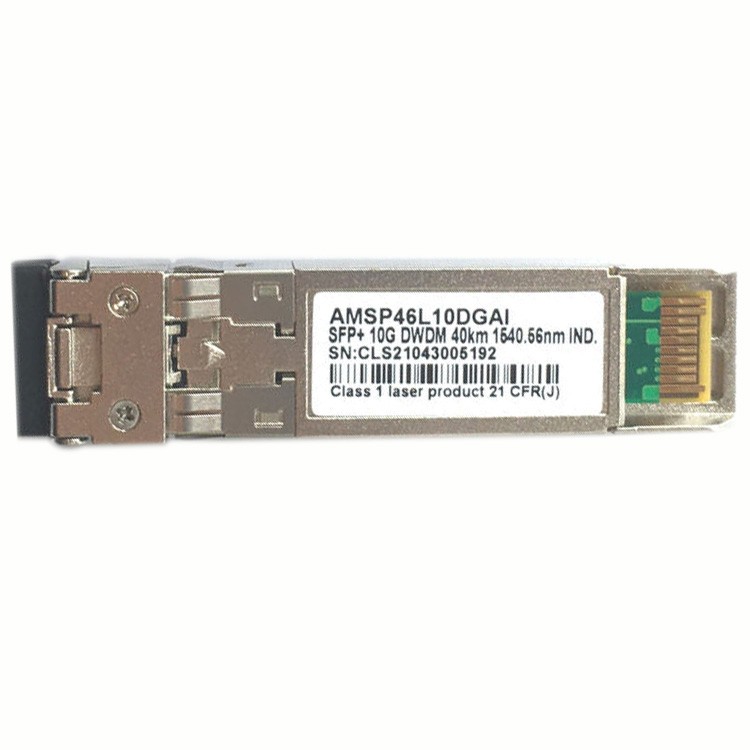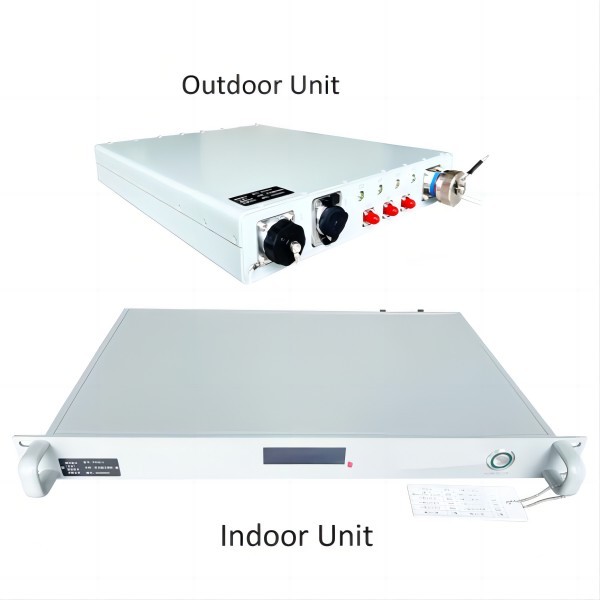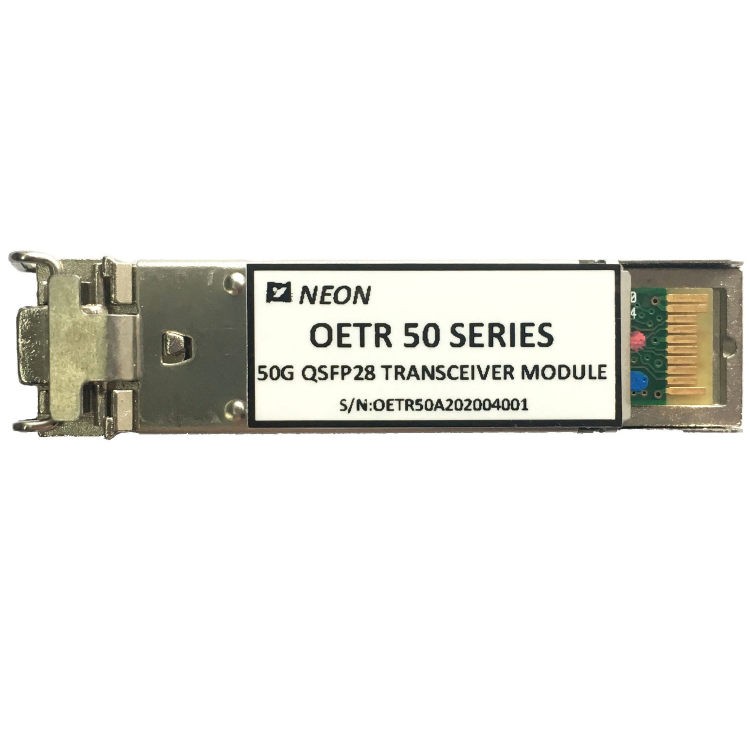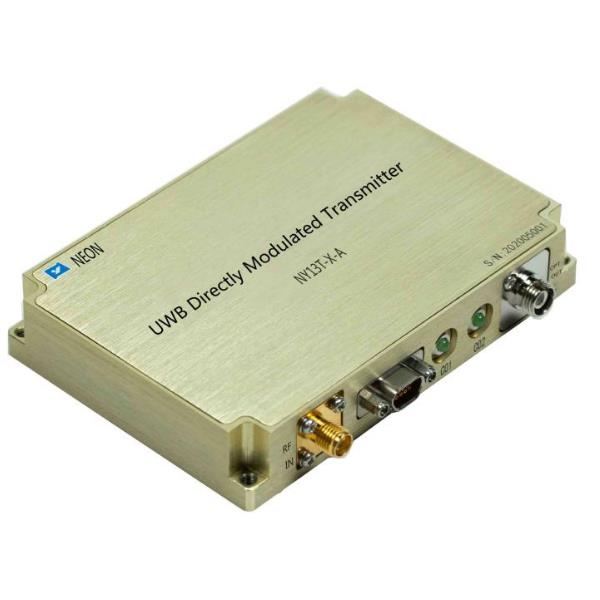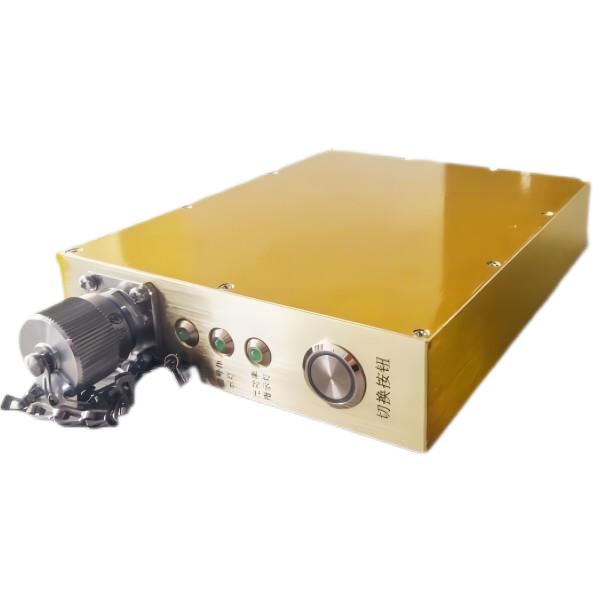What is an Optical Transceiver and How Does It Work?
In the rapidly evolving age of data communications today, high-speed and reliable transmission is growing at an incredible pace. From carrier networks to data centers and even LANs on the enterprise level, optical transceivers are the must-haves. Today, we will provide a comprehensive overview of what are optical transceivers, how they work, the common types available, their application areas, and how to choose the right module for your needs. Let’s get started!
Part 1. What is an Optical Transceiver?
An optical transceiver is an electronic device which converts electrical signals to optical signals and vice versa, usually found within network devices like switches, routers, or servers as the central unit for fiber optic communications such as data transmission through fiber.
Optic transceivers enable devices to exchange optical data signals over long distances at high speeds. This component combines transmitter and receiver in one module: an optical transmitter-receiver module.
The transmitter converts electrical signals generated by network devices into optical signals by employing light sources like laser diodes (LDs) and light emitting diodes (LEDs), then sends it along optical fiber.
Optic signals entering a receiver are captured using a photodiode (PD), converted into electrical signals, and sent onward for processing by devices.
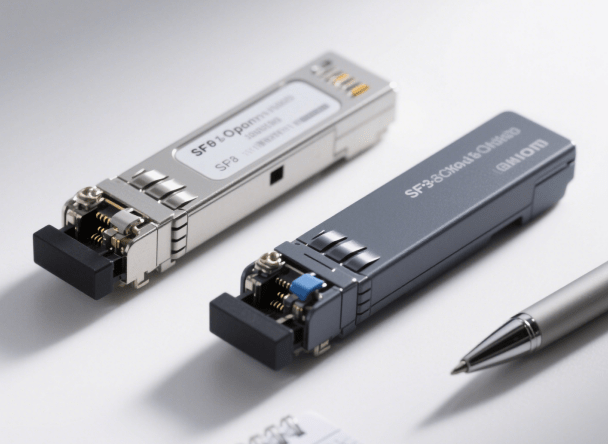
Part 2. How Does Optical Transceiver Work?
The operational principle of an optical transceiver lies in two fundamental processes by which electrical and optical signal conversion is enabled:
1. Electrical to Optical Signal Conversion
When transmitting data is required, optical transceivers first convert an electrical signal from its host equipment (for instance a switch or router) into light using emitting devices such as Vertical-Cavity Surface-Emitting Lasers (VCSEL) or Distributed Feedback Lasers (DFB), creating modulated beams of light which encode digital information through intensity modulation, phase modulation or frequency modulation.
- VCSELs are ideal for short-distance communication due to their lower power and cost requirements.
- DFB lasers are ideal for long-distance transmission applications as their stable wavelength and narrow linewidth help minimize signal loss and interference over long fiber optic cables.
Fiber optic cables then quickly transport this optical signal with minimal attenuation or interference, so data is delivered swiftly.
2. Optical to Electrical Signal Conversion (OESC)
On the receiving side, an optical transceiver converts received optical signals into digital data using either a PIN photodiode or an Avalanche Photodiode (APD).
- PIN photodiodes convert light photons directly to electrical current, making them the ideal solution for medium sensitivity and bandwidth applications.
- APDs offer greater sensitivity by amplifying their internal electrical signal, making it ideal for longer distances or lower signal strengths environments.
A photodetector converts light signals into electrical signals that can then be amplified and processed by receiving network devices.
Support of Full-Duplex Communications
Two-way conversion enables optical transceivers to support full duplex communications – that is, simultaneously receiving and transmitting data using one fiber link – an essential feature in high-speed networks where bandwidth efficiency must be optimized and latency reduced.
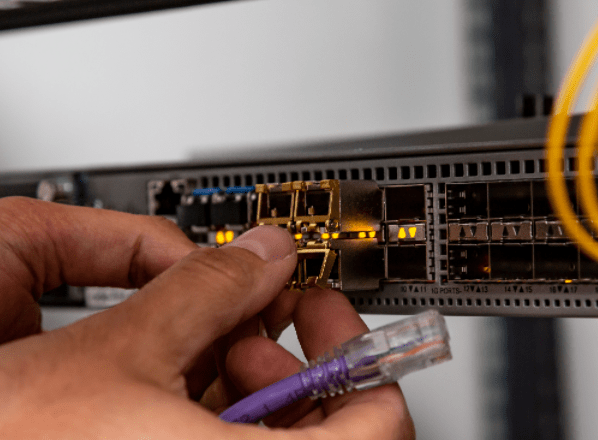
Part 3. Common Types of Optical Transceivers
In this section, we will briefly introduce the most common optical transceivers used in modern networking. To provide you with a quick reference, we have come up with a simplified table of their main specifications.
Following the table, each type will be described in detail to make you more familiar with them.
| Type | Full Name | Data Rate | Application |
| GBIC | Gigabit Interface Converter | 1 Gbps | Older network switches, being phased out |
| SFP | Small Form-factor Pluggable | 1 Gbps | Enterprise networks, fiber access |
| SFP+ | Enhanced Small Form-factor Pluggable | 10 Gbps | Data centers, server interconnections |
| SFP28 | SFP 28 Gbps | 25 Gbps | Cloud computing, data centers |
| XFP | 10 Gigabit Small Form Factor | 10 Gbps | Telecommunications equipment |
| X2/XENPAK | Older 10G Modules | 10 Gbps | Mostly phased out |
| QSFP | Quad Small Form-factor Pluggable | 4 x 1 Gbps | Link aggregation |
| QSFP+ | Enhanced QSFP | 4 x 10 Gbps (40 Gbps) | Data center core switching |
| QSFP28 | QSFP 28 Gbps | 4 x 25 Gbps (100 Gbps) | High-speed backbone networks |
| QSFP56 | QSFP 56 Gbps | 200 Gbps | High-performance computing |
| QSFP-DD | Double Density QSFP | 400 Gbps | Hyperscale data centers |
| CFP/CFP2/CFP4 | C Form-factor Pluggable | 100 Gbps | Core routers |
| OSFP | Octal SFP | 400 Gbps | Next-generation cloud computing infrastructure |
1. GBIC (Gigabit Interface Converter)
GBIC is one of the earliest hot-swappable optical transceiver modules designed for 1 Gbps transmission. It was widely used in older network switches but has gradually been phased out due to its relatively large size and the emergence of smaller, more efficient modules.
2. SFP (Small Form-factor Pluggable)
SFP optical transceivers support 1 Gbps data rates and are widely used in enterprise networks and fiber access scenarios. They are compact, hot-swappable, and compatible with various fiber types and transmission distances, making them a versatile choice for many networking environments.
3. SFP+ (Enhanced Small Form-factor Pluggable)
An enhanced version of the SFP, the SFP+ supports 10 Gbps speeds. It is commonly deployed in data centers and server interconnections, offering higher bandwidth while maintaining a small form factor and easy hot-swapping capability.
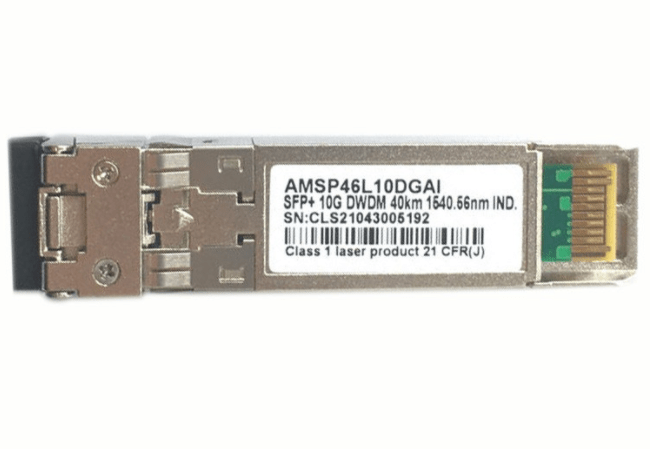
4. SFP28
SFP28 modules support 25 Gbps transmission rates and are designed for next-generation cloud computing and data center applications. They offer backward compatibility with SFP and provide higher data throughput for modern high-speed networks.
5. X2/XENPAK
These are older 10 Gbps transceiver modules that have mostly been phased out due to their large size and high power consumption compared to newer alternatives. They were once popular in early 10 Gigabit Ethernet deployments.
6. QSFP (Quad Small Form-factor Pluggable)
QSFP modules aggregate four 1 Gbps channels into a single module, effectively providing 4 Gbps throughput. They are used to increase bandwidth via link aggregation and are common in network uplinks.
7. QSFP+ (Enhanced QSFP)
QSFP+ supports 40 Gbps by combining four 10 Gbps channels. It is widely used in data center core switching and server interconnections where high-speed, low-latency communication is critical.
8. QSFP28
QSFP28 modules provide 100 Gbps speeds by aggregating four 25 Gbps lanes. These modules are a standard choice for high-speed backbone networks and large-scale data center environments requiring ultra-high bandwidth.
9. XFP (10 Gigabit Small Form Factor)
XFP modules are used primarily in telecommunications equipment and support 10 Gbps data rates. Although larger than SFP+ modules, they were a standard solution for 10 Gigabit Ethernet before the rise of more compact form factors.

10. QSFP56
QSFP56 doubles the bandwidth of QSFP28 to support 200 Gbps, making it suitable for high-performance computing clusters and advanced cloud infrastructure demanding extremely fast data transfer rates.
11. QSFP-DD (Double Density QSFP)
QSFP-DD is a next-generation module that doubles the density of QSFP modules, supporting speeds up to 400 Gbps. It is designed for hyperscale data centers and ultra-large network infrastructures where maximum throughput and port density are essential.
12. CFP/CFP2/CFP4 (C Form-factor Pluggable)
CFP series modules are larger form factors designed for 100 Gbps and above. They are commonly used in core routers and metro networks, offering high port density and stable performance for backbone and long-haul transmissions.
13. OSFP (Octal SFP)
OSFP is a newer high-density module supporting 400 Gbps transmission speeds. It offers improved thermal management and power efficiency and is increasingly adopted in next-generation cloud computing infrastructure demanding extreme data throughput.
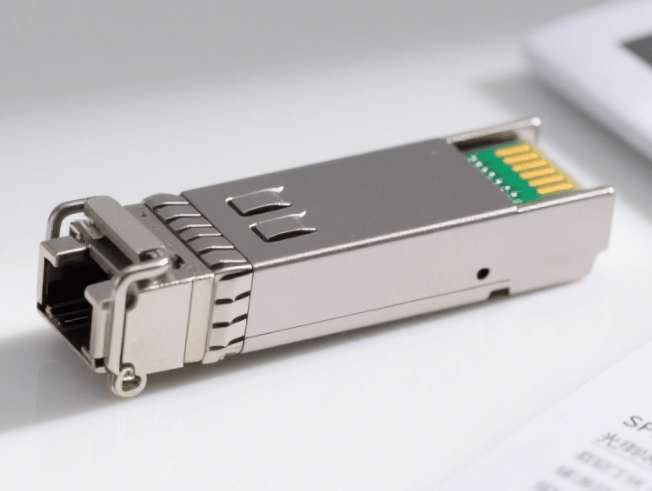
Each of the optical transceivers is designed for specific network requirements, balancing between parameters like size, speed, power utilization, and application environment to meet the various requirements of current fiber optic communications.
Part 4. Typical Applications of Optical Transceivers
Optical transceivers are applied widely in various significant network spaces due to their capability to enable high-speed and secure data transmission.
Data Center Interconnect (DCI): Optical transceivers enable super-fast interconnection between servers, storage devices, and network equipment within and between data centers and enable rapid data exchange with low latency.
Carrier Networks: These modules in metropolitan area networks (MAN) and wide area networks (WAN) offer long-haul data transmission that is high capacity; supporting internet service providers’ backbone networks as well as telecom operators networks.
Enterprise Networks: Optical transceivers connect devices within local area networks (LANs), serving as backbone links between multiple branch offices to optimize network performance and scalability.
5G Transport Networks: 5G transport networks are an essential element of 5G infrastructure, particularly fronthaul and midhaul links, providing high bandwidth with low latency between base stations and core networks.
Fiber to the Home (FTTH): Optical transceivers play a pivotal role in providing high-speed fiber optic links directly to homes and businesses subscribers, giving them fast and stable internet access on both ends.
These different applications highlight the essential role that optical transceivers play in modern communication networks.
Part 5. Neon SFP+ Optical Transceiver – Your Reliable Choice
Neon 10KM DWDM SFP+ Optical Transceiver is a high-density SFF-8431, SFF-8432, and IEEE 802.3ae compliant module. The ITU-T standard DWDM wavelength selection is employed and it is designed for 10km single-mode fiber transmission.
It comes with a high-performance DFB laser and PIN photodiode and delivers digital diagnostics for real-time device temperature, laser bias current, transmitted and received optical power, and supply voltage monitoring for stable and secure network operation.
The all-metal housing provides enhanced electromagnetic interference (EMI) protection while its low power consumption design promotes energy efficiency.
This optical transceiver supports 10GBASE-LR as well as 2G, 4G, 8G, and 10G Fiber Channel applications, making it suitable for carrier networks, data centers and 5G backhaul networks with requirements for high bandwidth and port density.

Key Features:
- SFF-8431, SFF-8432, and IEEE 802.3ae compliant
- ITU-T standard DWDM wavelength selection supported for flexible channel allocation
- Transmission distance up to 10km over single-mode fiber
- Equipped with DFB laser and PIN photodiode for high-performance signal transmission
- Digital diagnostics enable real-time monitoring of temperature, current, optical power, and supply voltage
- All-metal housing provides excellent EMI protection and ensures durability
Wrap Up
Optic transceivers are essential components of modern optical communication systems. Not only can they facilitate fast data transmission speeds but they also offer flexibility, efficiency, and reliability. With technology rapidly changing thanks to 5G networks, cloud computing, and big data projects, optical transceivers will see increased demand; understanding their basic principles, applications, and selection methods will allow you to manage and deploy network systems more efficiently.
Neon is your one-stop solution for high-performance optical transceivers with excellent compatibility. Don’t hesitate to contact them for technical support!


